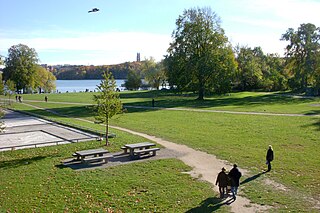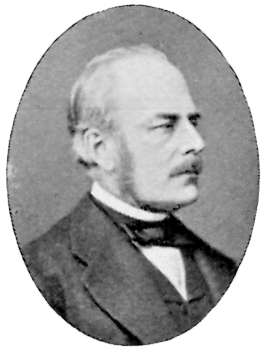

Erik Glemme (27 May 1905- 20 January 1959) was a Swedish designer and landscape architect. [1]


Erik Glemme (27 May 1905- 20 January 1959) was a Swedish designer and landscape architect. [1]
Glemme was born in Jönköping, Sweden. He trained at the Royal Institute of Technology in Stockholm from 1927 to 1929. He apprenticed with architect Osvald Almqvist (1884–1950). He was employed at the Royal Institute of Technology as an assistant 1943-1947 and as a teacher 1947–1952. From 1936 to 1956 he was chief architect of the design office of the city of Stockholm Parks Department. [2] [3]
His work includes Mälarpaviljongen, a landscape park on Norr Mälarstrand, which he designed with landscape architect Holger Blom (1906-1996). Other notable works include the remodelling of Tegnérlunden and Vasaparken in Stockholm, design of Rålambshovsparken in the Marieberg district of Kungsholmen which opened in 1936 and Grynkvarnsparken in Johanneshov designed in the mid-1950s. [4] [5] [6] [7] [8] [9]

Rågsved is a suburb historically belonging to the district of Bandhagen in Stockholm, Sweden.

Axel Johan Anderberg was a Swedish architect. He was active from the 1880s to the early 1930s.

Ragnar Östberg was a Swedish architect who is best known for designing Stockholm City Hall.

Sigurd Lewerentz was a Swedish architect.

Tage William-Olsson was a Swedish architect and chief town planning architect of Gothenburg. He was one of the designers of the Slussen traffic-roundabout infrastructure-project built during 1935 in Stockholm.

Vasaparken is a park in the Vasastaden district of Stockholm, Sweden.

Västertorp (Westcroft) is a district of the Hägersten-Liljeholmen borough in Söderort, the southern suburban part of Stockholm, Sweden.
Tegnérlunden is a park at the border of city districts Norrmalm and Vasastan in central Stockholm, Sweden.

Rålambshovsparken is a park in the Marieberg district on the island of Kungsholmen in Stockholm, Sweden.

Sture Ljungqvist was a Swedish architect.

Adolf Wilhelm Edelsvärd was a Swedish architect, engineer and military officer.

Millesgården is an art museum and sculpture garden, located on the island of Lidingö in Stockholm, Sweden. It is located in the grounds of the former home of sculptor Carl Milles (1875–1955) and his wife, the artist Olga Milles (1874–1967). Millesgården consists of three main parts: the artists' former home, an art gallery, and a sculpture park.

Osvald Almqvist (1884–1950) was a Swedish architect, who was one of the pioneers of functionalism in Swedish architecture. His designs include those for hydro-electric power stations at Forshuvudfors (1917–21), Hammarfors (1925-28) and Krångfors (1925–28). Between 1939 and 1938, Almqvist was in charge of the Stockholm Parks Department.

Cyrillus Johansson was a Swedish architect.
Tengbom is one of Europe's oldest architectural companies and one of the largest in the Nordic countries. The firm is headquartered in Stockholm, Sweden.

Léonie Geisendorf, née Kaplan, was a Polish-born, Swedish architect. She lived most of her professional life in Stockholm, Sweden. At the time of her death, she was living in Paris, France.

Sten Samuelson was a Swedish architect.

Carl Gustaf Bergsten was a Swedish architect. He graduated in 1901 from the KTH Royal Institute of Technology and three years later from the Royal Swedish Academy of Fine Arts in Stockholm. A scholarship took him to Germany and to Vienna. He apprenticed with architects Isak Gustaf Clason and Erik Lallerstedt. Bergsten ran his own architectural firm from 1904-35. He was influenced by the National Romantic style and Functionalism. He designed a number of exhibition spaces including Liljevalchs konsthall. For the Norrköping Exhibition of Art and Industry in 1906, Bergsten designed the exhibition's two main buildings the Industrial Hall (Industrihallen) and the Art Exhibition Hall (Konsthallen) as well as the Hunting Pavilion (Jaktpaviljongen).

Gerda Charlotta Wallander was a Swedish portrait and genre painter.

Frans Hilding Ekelund was a Swedish architect. He was the city architect for Landskrona between 1913 and 1949. Originally from Malmö, he was the son of the master builder Nils P. Ekelund. In 2019, Frans Ekelund received a memorial stone on the Landskrona Walk of Fame.